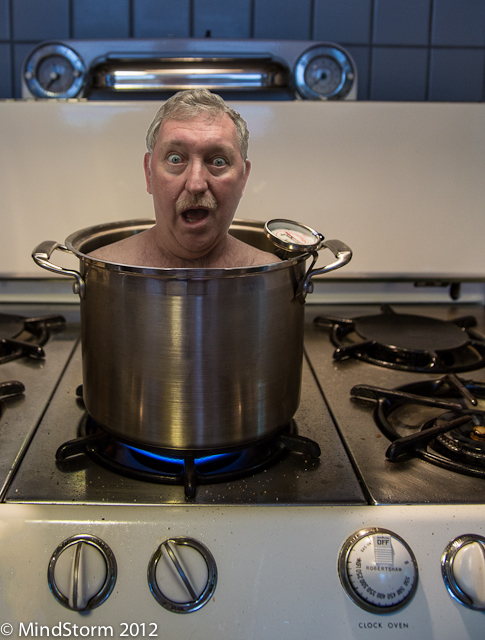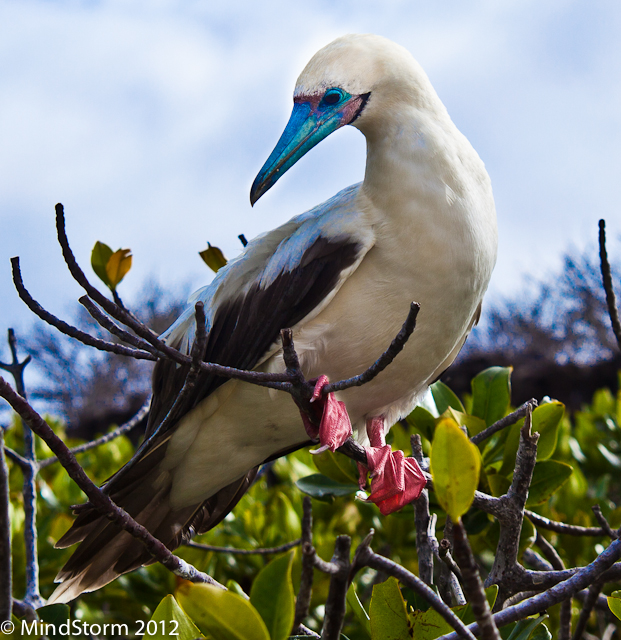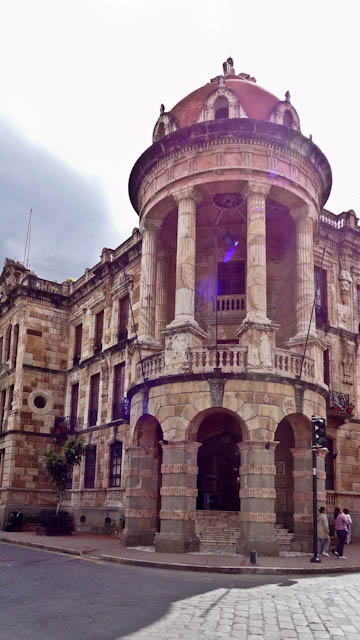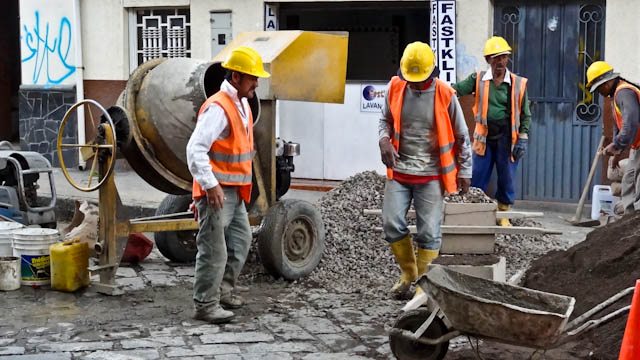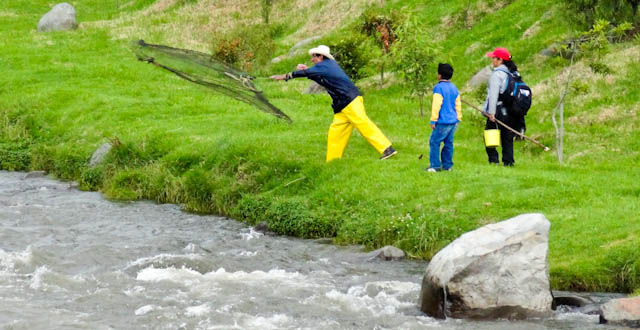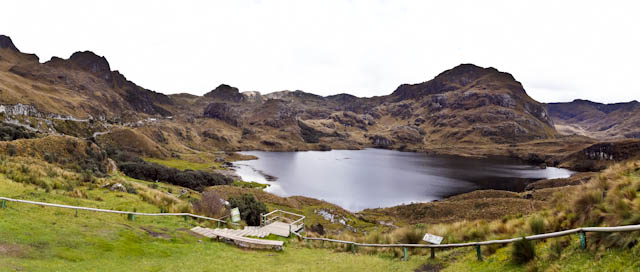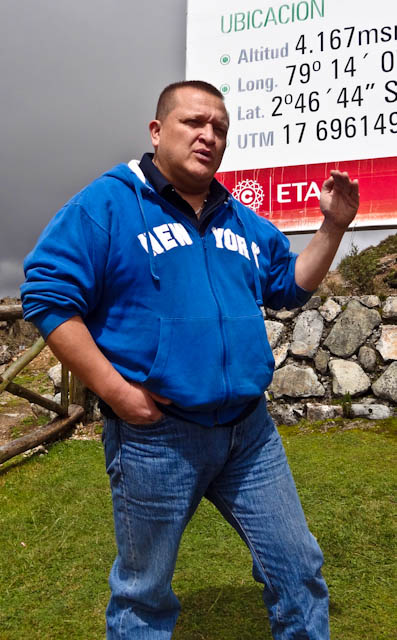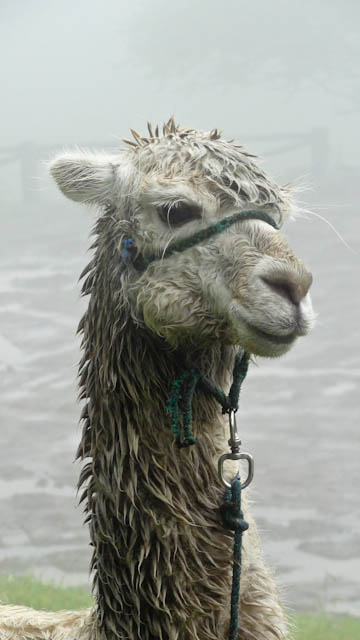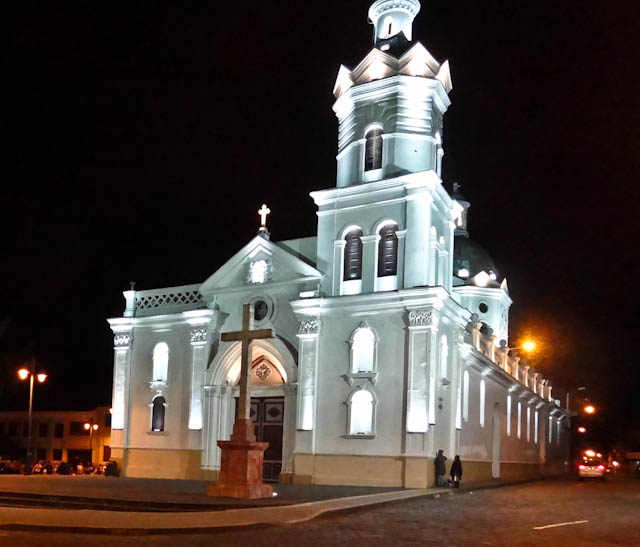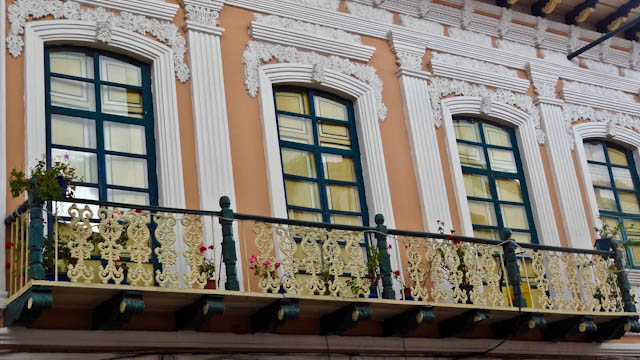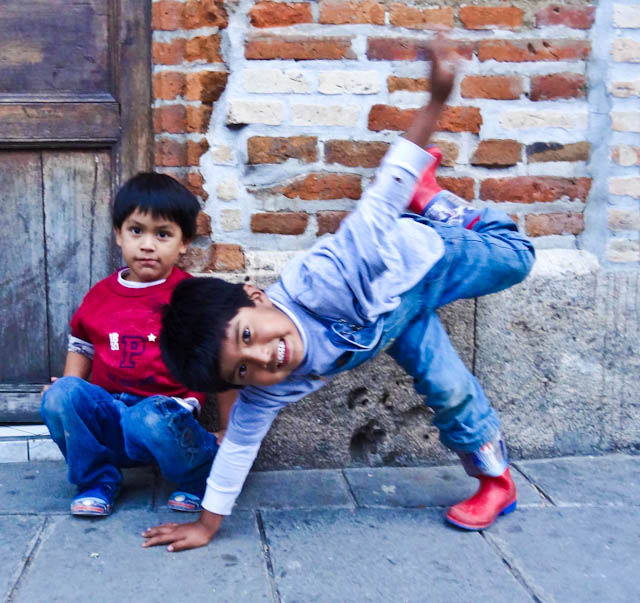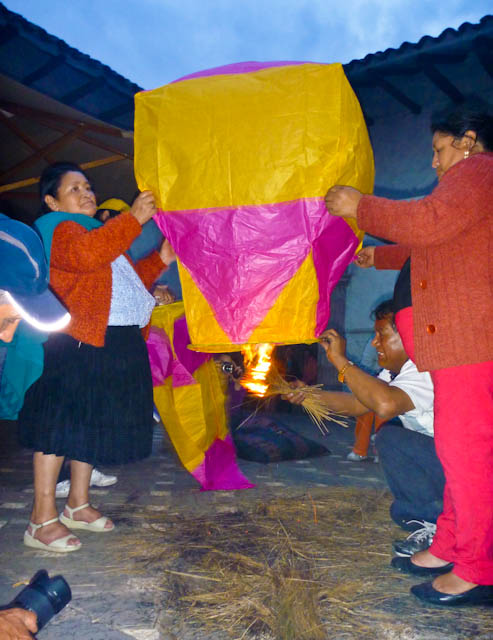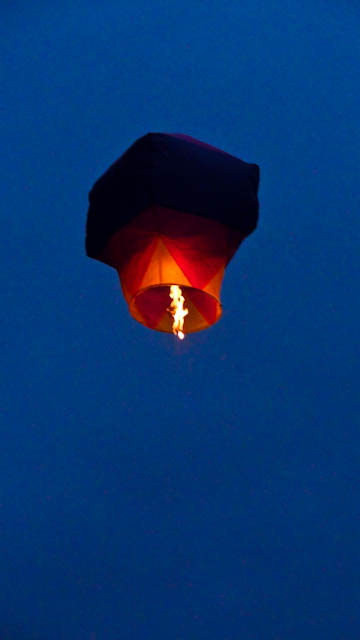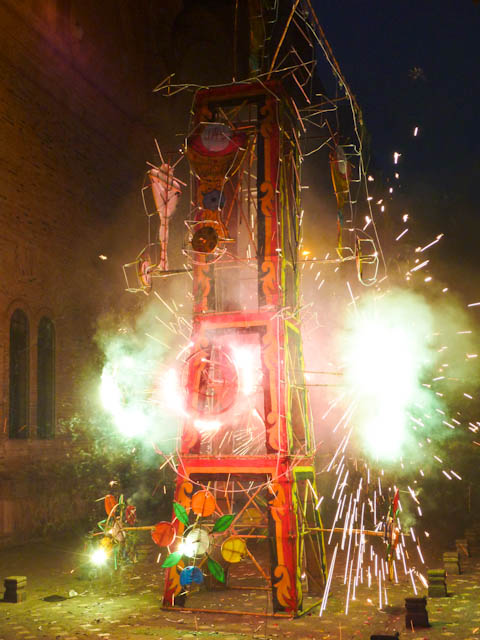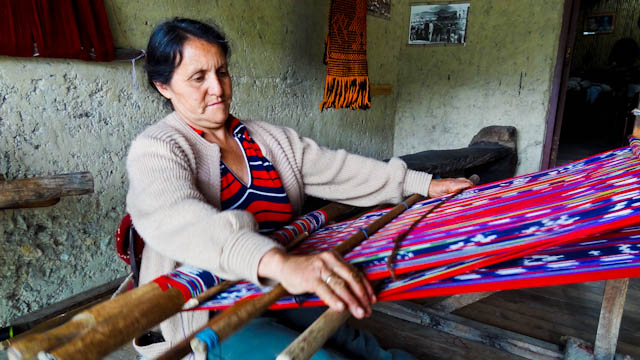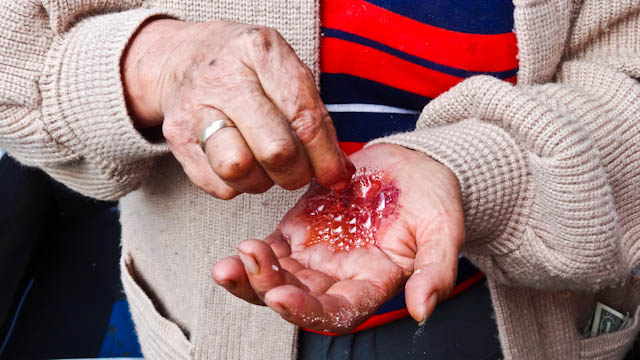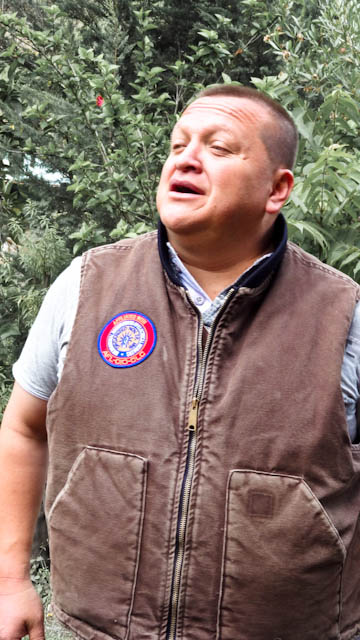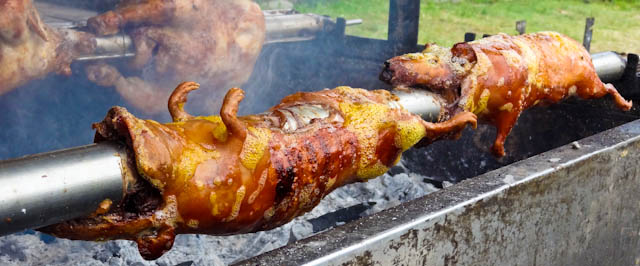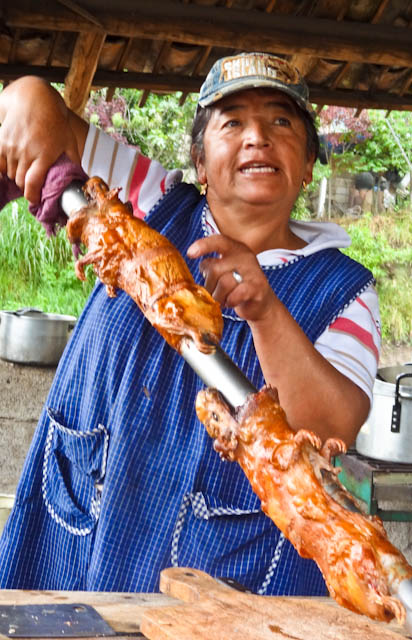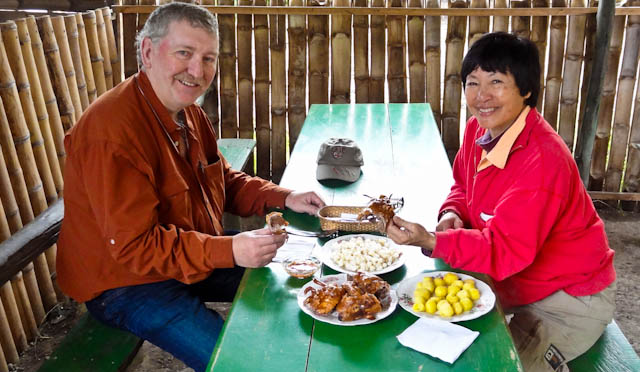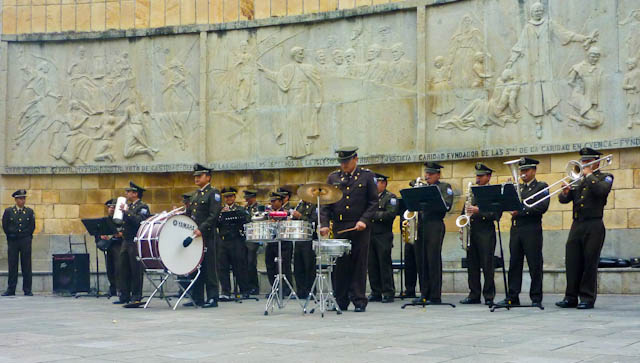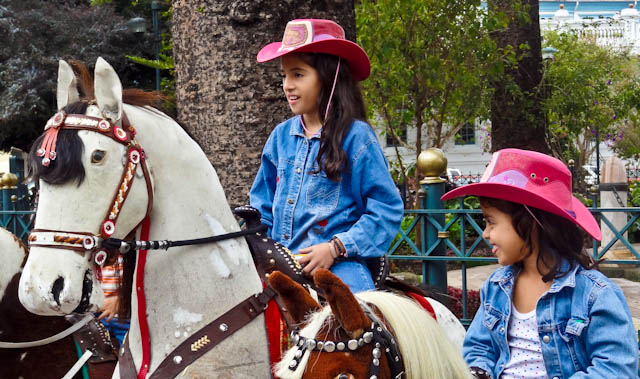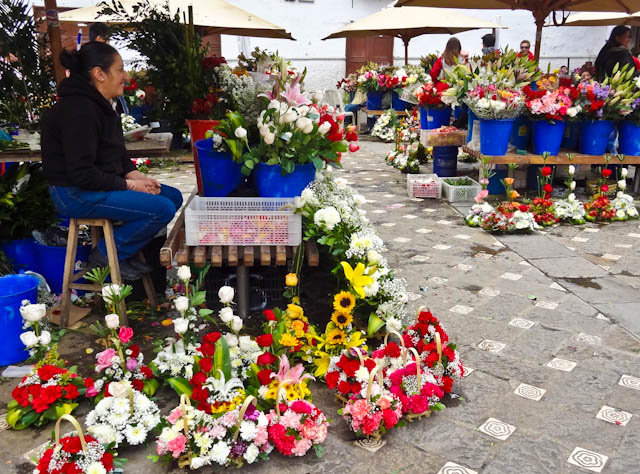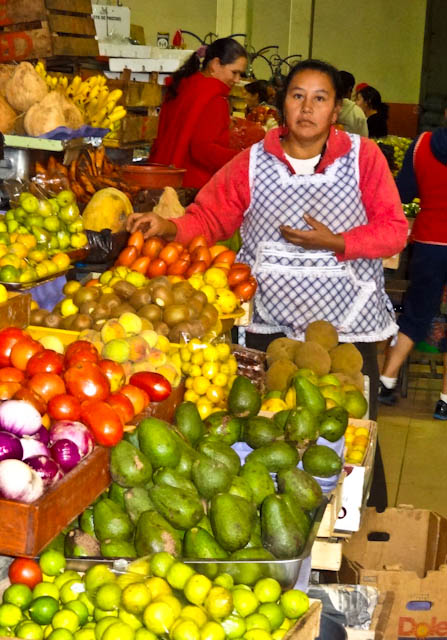Shot in the back! Squirt guns rule the roads! All flee in panic!
Carnaval is upon us, and here in Cuenca, Carnaval is more “water war” than booze. The weather is warm and (mostly) kids roam the streets, often in the back of their parent’s pick-up truck, spraying anyone they see — with Gringos being an especially favorite target. Within a few minutes of the passing attack, you are dry again and can probably expect another shot Real Soon Now…
We had an excellent breakfast at the Kookaburra Cafe. An Australian couple opened this place 4 years ago, and have recently sold it, to move to Paute. The Canadian couple that has purchased the restaurant have not yet taken it over though, so we had a nice chat with the original owners. If you go, I recommend their “stuffed omelet”, though you should probably skip the veggie juice unless you are health nut that likes that kind of thing. Give me good old fashioned jugo naranja (orange juice) any time.
Next we walked over to the main square (Parque Calderon), and visited iTur — the tourist information center. Nobody at iTur spoke a bit of English, but we managed to muddle through (hurray!) and got the map and info we wanted. We then walked around the square, where Evelyn photographed the cathedral.
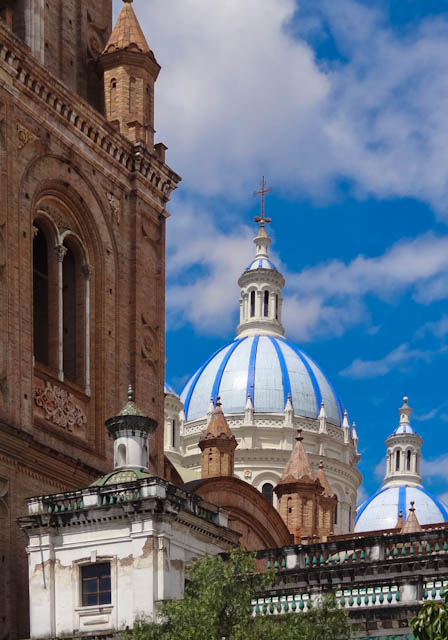
I have variously read that there are 52 or 53 Catholic churches in Cuenca. Though I am not sure which number is correct, I have no trouble believing there is one for every day of the week. You can’t go more than a few blocks without coming across another one.
We hopped on the double-decker bus for a city tour ($5), since it had been recommended by two other couples. Of course we sat on the top, and thus found ourselves doused by a water bucket throwing teenager as we passed under his balcony. Oh, the joys of Carnaval again… 🙂
If you go on this bus, don’t sit in the front row of the top level. There is a barrier there for looking pretty from the ground, but it completely obscures your view. We moved back a couple rows for a better view. They take you through town, speaking almost exclusively Spanish at far too rapid a clip for me to pick any of it up, and then take a short break on top of a hill overlooking the city for a scenic view.

On the way down, we opted to get off at Mall de Rio, so we could see what a mall was like in Cuenca. The anchor tenant there is Coral. Think Walmart + Best Buy (sans computer) + Home Depot + Ikea + motorcycles + groceries, and you begin to get an idea of the size and variety of this monster store.
We decided to buy a space heater, since our apartment was so darn cold at night (it is setting records, much to our chagrin). How do you say “space heater” in Spanish? We tried various iPhone translators, and got a variety of alternatives, none of which made sense or which the clerk could understand. Finally Evelyn just pantomimed being cold, and the clerk took us directly to the right place. The magic of hand gestures works round the world, even when the spoken word is not understood! The heater cost $42 + tax, so we were perfectly happy to buy it for a week’s use.
We also picked up some snacks for the apartment (we have a kitchen, so have occasionally made our own meals), and together with the space heater grabbed a taxi home.
Ah yes, the taxi. Be sure to come down here with lots of $1 bills, because you will use taxis a lot, and they are $2 whether going one block or across town. We came with far more $1 bills that I thought we could possibly use, and by the end of the week was running low. $1 buys a lot down here.
Back at our apartment, we met Vick and Joan, a retired Canadian couple that are now full time RVers roaming Canada and the US. They have been in Ecuador a couple months, but Joan “did a face plant” as she tells it, in Quito in their first week in-country. She now has a cast on both her wrist and foot, which makes getting around this hilly town difficult. They are both full of life and fun though, and aren’t letting anything as small as some broken bones keep them down.
They found out about a show with great reviews for tonight, and invited us to join them. The show was at Likapaay, but was a disaster. The normal “traditional dancers” were replaced by a so-so Cuban singer, and the food was reduced to just appetizers. We asked the owner if there would be dancing later, and she said “yes, the guests will dance.” I look around the almost-empty room, with literally nobody engaged with the music, and said “I don’t think so…”
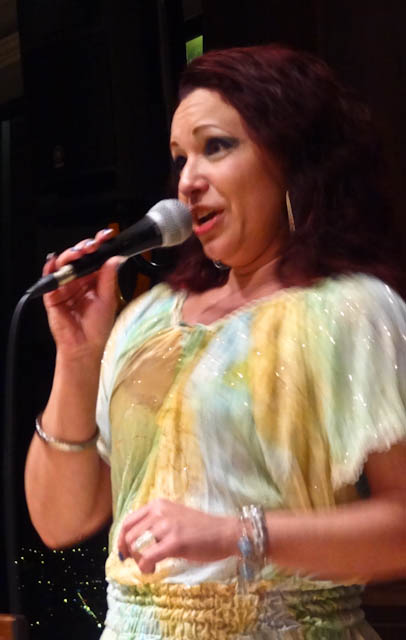
We asked for the check, and they tried to charge us much more than we had originally been quoted. We told the owner we would not pay that much, and were leaving in the middle of the show. To give the owner credit, she apologized, accepted the $10 originally agreed to, and called a taxi for us.
When we left, another group of 6 also left (that meant that 10 of the 21 patrons walked out with us). Martha (pronounced ‘Marti”), from the other group, invited us all over to another restaurant that she said had good food.
We all took 3 taxis down to the Eucalyptus restaurant (Gran Columbia 9-41 y Benigno Malo), where we had an excellent meal together. Marti was born in Ecuador and left at the age of 17 to go to the US. She later married and settled in San Francisco with a silver jewelry business. After 40 years, she decided to visit her home country for the first time — and ended up with a damaged meniscus in Quito (sounds like a dangerous town — two people we met on the same day were hurt there…). She was forced to stay in Ecuador for medical treatment, and by the time she was back on her feet, found she had fallen in love with the country.
We talked well into the night, and Marti helped turn a potential disaster into a night of fun and laughter. She was another of the people we kept running into all week where a stranger one minute became a friend the next, with little more than a Hello needed to make the switch.

